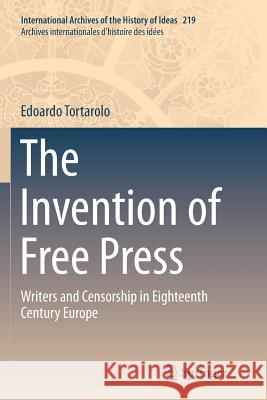The Invention of Free Press: Writers and Censorship in Eighteenth Century Europe » książka
topmenu
The Invention of Free Press: Writers and Censorship in Eighteenth Century Europe
ISBN-13: 9789402413328 / Angielski / Miękka / 2018 / 200 str.
Kategorie BISAC:
Wydawca:
Springer
Seria wydawnicza:
Język:
Angielski
ISBN-13:
9789402413328
Rok wydania:
2018
Wydanie:
Softcover Repri
Ilość stron:
200
Waga:
0.32 kg
Wymiary:
23.39 x 15.6 x 1.22
Oprawa:
Miękka
Wolumenów:
01
Dodatkowe informacje:
Wydanie ilustrowane











